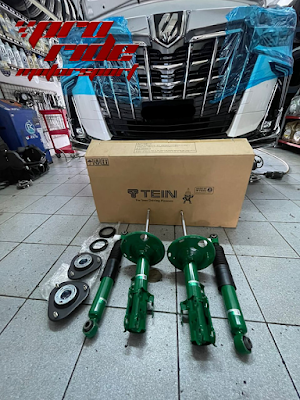Do I need new shocks?
Do I need new shocks?
One of the most common question we get asked is, “Do I need new shocks,” or “How do I know if my shocks should be replaced.” We will try our best to answer it, but first, let’s make sure we understand what shocks really do.
Shocks and struts are not just about ride and comfort. They use a series of complex valves to control fluid movement, this manages the speed of body movement and controls the up-and-down motion of the tire. When shocks are working as designed, the vehicle is in control, able to quickly respond to and recover from steering and braking commands. As the valves wear inside the shocks wear, they can’t control the fluid as well, this means additional tire movement, body movement and ultimately, less vehicle control.
So, how do you know if they should be replaced? Thankfully there are a couple of clues you can look for to help you make a better decision. How does your vehicle feel and respond?
Normal Driving: Does you vehicle still feel and sound like a new car? Worn shocks allow additional movement, this means more vibrations and more noise when driving at normal speeds.
Stopping: How does your vehicle respond when stopping? If your shocks are working as designed your vehicle should stay controlled when stopping and you should be able to feel the rear brakes helping to slow the vehicle down. As the shocks wear, they allow too much body and tire movement, weight shifts too far forward too quickly and the vehicle may be harder to steer. At the end of the stop the nose of the vehicle may bob up and down, this is a good clue the shocks are worn as they are no longer able to control body movement.
Do you know the recommended mileage for passenger vehicle shock absorber replacement?
50,000km is the recommended mileage. So have you replace your shock absorber yet?
Even on well paved roads, the shocks can move up or down 1,500 to 1,900 times every km. In 50,000 km that can exceed 75 million cycles. Over time, performance tends to decrease gradually, and the motorist usually doesn’t realize how much handling and control is lost. Replacing shocks and struts after 50,000 km can keep the vehicle performing as well as it was designed and extend its life expectancy.
Worn shocks and struts eventually causes ride control conditions to worsen to a degree that impairs the drivers ability to control the vehicle. Road testing and vehicle inspections by a qualified technician every 20,000 km is recommended to identify and keep the motorist informed about these conditions.
Shock or strut failures are a driving safety hazard. If you can’t control your vehicle, then it controls you. Evidence of failures includes things like excessive bounce, units leaking to the point of fluid dripping, tires that are cupping and component damage that can be seen during inspection.
A “COMPLETELY FAILED” SHOCK OR STRUT MAY:
> Leak hydraulic fluid.
> Cause uneven or cupped tire wear.
> Create unsafe driving conditions.
> Make knocking noises or rattles.
> Create vehicle swaying and require constant steering corrections



Comments